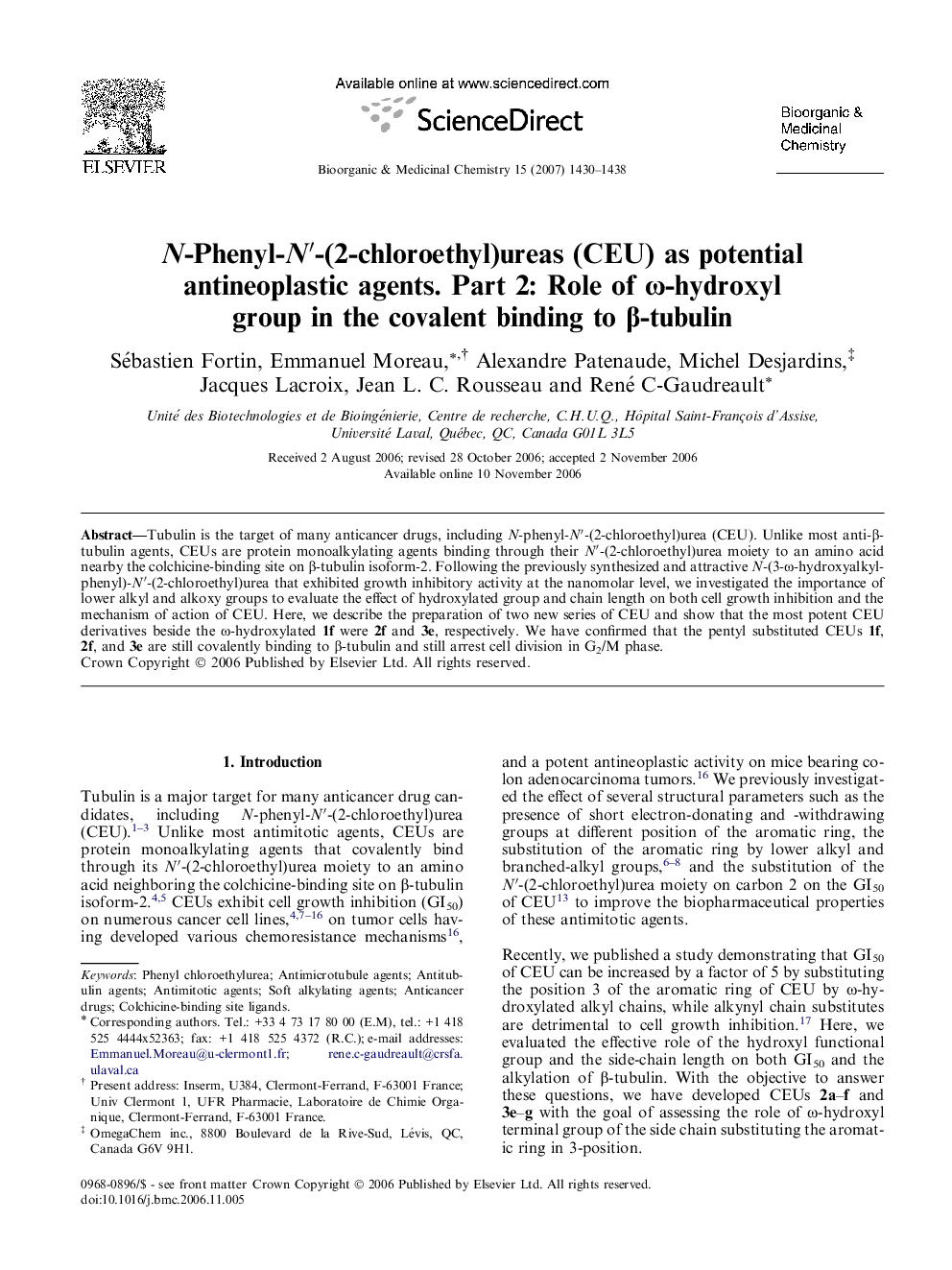| کد مقاله | کد نشریه | سال انتشار | مقاله انگلیسی | نسخه تمام متن |
|---|---|---|---|---|
| 1364897 | 981548 | 2007 | 9 صفحه PDF | دانلود رایگان |

Tubulin is the target of many anticancer drugs, including N-phenyl-N′-(2-chloroethyl)urea (CEU). Unlike most anti-β-tubulin agents, CEUs are protein monoalkylating agents binding through their N′-(2-chloroethyl)urea moiety to an amino acid nearby the colchicine-binding site on β-tubulin isoform-2. Following the previously synthesized and attractive N-(3-ω-hydroxyalkylphenyl)-N′-(2-chloroethyl)urea that exhibited growth inhibitory activity at the nanomolar level, we investigated the importance of lower alkyl and alkoxy groups to evaluate the effect of hydroxylated group and chain length on both cell growth inhibition and the mechanism of action of CEU. Here, we describe the preparation of two new series of CEU and show that the most potent CEU derivatives beside the ω-hydroxylated 1f were 2f and 3e, respectively. We have confirmed that the pentyl substituted CEUs 1f, 2f, and 3e are still covalently binding to β-tubulin and still arrest cell division in G2/M phase.
Importance of chain length and ω-hydroxyl group on cell growth inhibition and β-tubulin alkylation.Figure optionsDownload as PowerPoint slide
Journal: Bioorganic & Medicinal Chemistry - Volume 15, Issue 3, 1 February 2007, Pages 1430–1438